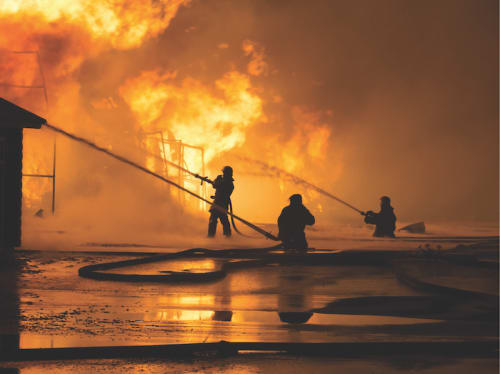2016
Sustainable Technologies
A new patented NASA technology has the potential to utilize recent advances in Radio Frequency Identification Devices (RFIDs) combined with smart software to create an electronic firefighter evacuation trail and fire safety information location system. The trail, with associated capabilities specified by the invention, can be followed out of a burning building even if interrupted by changing fire conditions.
Although India is the world’s second largest fruit and vegetable producer, it is estimated 18-30% is wasted. 20% of this happens in the marketplace due to heat, pests and sun spoilage. Only 10% of fruit and vegetables are refrigerated any time before sale.
In Gujarat, on av. the temperature is 34°C and the humidity is 40% (excluding monsoon season).
An evaporative cooling tower is a heat exchanger where transformation of heat takes place from circulating water to the atmosphere. The warm water from the condenser is taken as an inlet water to the cooling tower and it is allowed to flow through the nozzles. As it falls down across baffles or louvers,
I want to create a ring that will consist of solar panels and the ring will be adjusted outside the atmosphere of Earth and in a such a manner that the ring will have the ring just at its center.
Globally the world is challenged with, but not limited to, the following issues: energy shortage, environmental (waste management, global warming, GHG), funding for energy projects, desertification and deforestation. The most critical challenge is how to develop capacity and source funding to deal with these issues for national growth and development.
Curedan is a smart dustbin which converts organic waste to electricity. This organic waste is converted to electricity via microbial fuel cells. This electricity is then transferred to a safer place and then be distributed to places with low electricity power.
This idea solves the problem of hardening steel surfaces. It is applied to flat surfaces or cylindrical surfaces ready to be hardened by thermal methods. These areas are found in the automotive industry, aerospace, rolling stock sub-assemblies and other sectors that require hardening on thin surfaces.
In developing countries, the problem of drinking water is becoming increasingly important, due to the population growth and rising living standards. Desalination of seawater and brackish water is now possible to meet the demand for potable water. The main objective of the present work is the study of a plan solar still with greenhouse effect.
Put simply, there is not enough drinking water to go around. The causes are well known; groundwater reserves are becoming saline and contaminated, urbanisation is increasing, populations are growing and industrial activity is competing for natural water supplies. According to the World Economic Forum (WEF) a global water crisis is the greatest resource threat humanity is facing today.
Page 3 of 16









